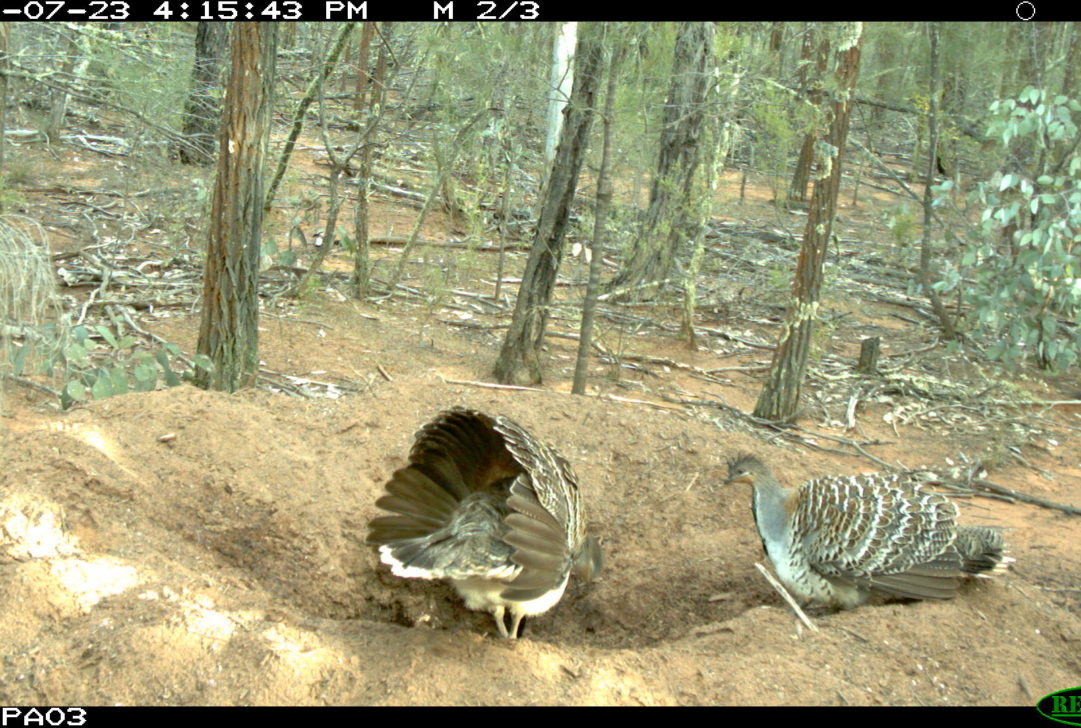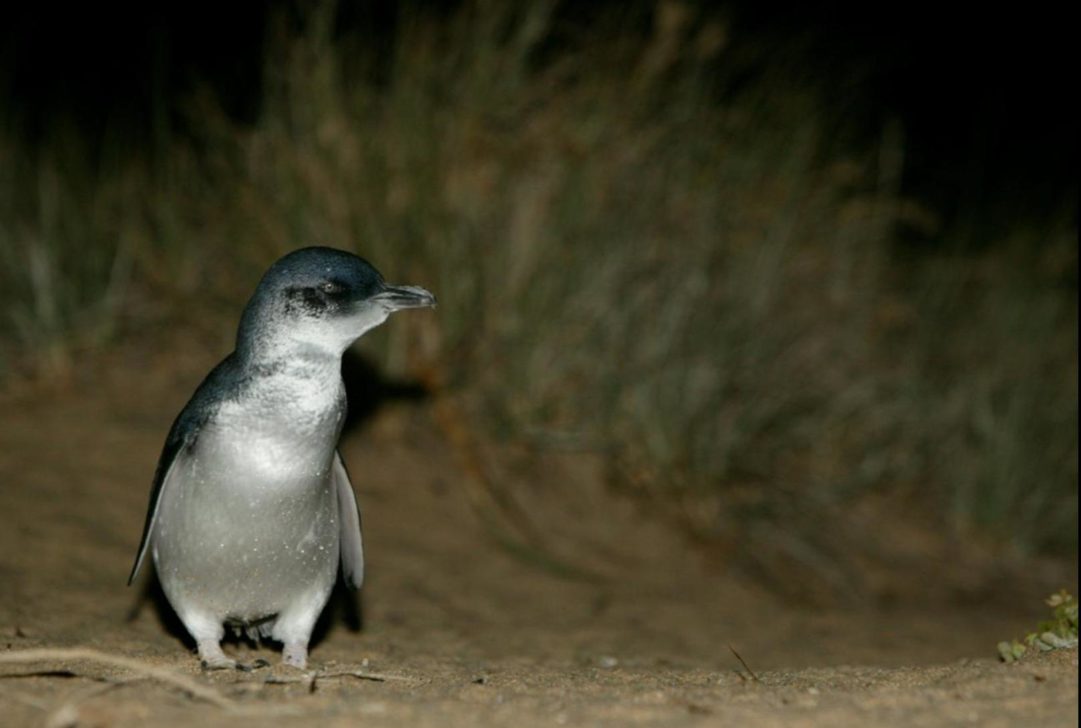Endorsed by the Invasive Plants and Animals Committee 2016 with minor updates September 2017.
DOWNLOAD AS PRINTABLE PDF
Background
Poisoning with sodium monofluoroacetate (1080) is used to minimise the impact of the introduced European red fox (Vulpes vulpes) on native fauna and agricultural production. Other fox control methods include shooting, trapping, den fumigation, den destruction and exclusion fencing. Lethal baiting is considered to be the most effective method currently available.
1080 is an odourless, tasteless white powder that has a special dye added for identification of the toxin. It is used for poisoning of foxes by incorporating it into fresh, dried or processed meat baits. Poisoned baits are distributed either on the ground by hand or from the air in a helicopter or fixed-wing aircraft. Aerial baiting procedures are described in NATSOP-FOX002 National Standard Operating Procedure: Aerial baiting of foxes with sodium fluoroacetate (1080).
Foxes are amongst the most sensitive species to the effects of 1080. Good baiting technique helps to minimise the risk to non-target species and maximise the effect on targeted fox populations.
This National Standard Operating Procedure (NATSOP) is a guide only; it does not replace or override the legislation that applies in the relevant state or territory jurisdiction. The NATSOP should only be used subject to the applicable legal requirements (including OH&S) operating in the relevant jurisdiction.
Application
- Baiting with 1080 should only be used in a strategic manner as part of a co-ordinated program designed to achieve sustained effective control.
- Ground baiting is used on rural properties or national parks and forestry estate that are accessible by road.
- Baiting with 1080 should not be used in areas where there is an unacceptably high risk to humans and companion animals, such as urban/residential landscapes.
- 1080 use is restricted in areas where there is a high risk of poisoning domestic stock and wildlife.
- Timing of baiting programs on agricultural lands depends on farm management practices and will often occur at or before lambing/kidding. Baiting is also carried out at times when juvenile foxes are dispersing. In contrast, 1080 baiting may be continuous and ongoing in most programs targeting the conservation of native fauna.
- Baiting of foxes with 1080 can only be carried out under conditions set down in a specific permit issued by the Australian Pesticides & Veterinary Medicines Authority (APVMA) under Commonwealth legislation (Agricultural and Veterinary Chemicals Code Act 1994). 1080 must also be used in accordance with relevant State, Territory and other Commonwealth legislation. The 1080 user may need to make a referral under the EPBC Act. See Table 1 (p7).
- 1080 is a restricted chemical product (under Regulation 45 of the Agricultural and Veterinary Chemicals Code Regulations 1995) and is listed as a Schedule 7 – Dangerous Poison under the Standard for the Uniform Scheduling of Drugs and Poisons (SUSDP). These listings require special precautions in the manufacture, handling, storage and use of 1080, along with specific regulations regarding labelling or availability.
- Handling of 1080 powder or concentrated solution and preparation of baits must only be performed by authorised persons who have the appropriate training.
- Prepared and manufactured 1080 baits can only be obtained by through authorised government agencies.
Animal welfare considerations
Impact on target animals
- The toxicity of 1080 is due to the conversion of fluoroacetate to fluorocitrate, which inhibits the tricarboxylic acid cycle – a mechanism necessary for cellular energy production. In general, herbivores experience cardiac failure, whereas carnivores experience central nervous system (CNS) disturbances and convulsions and then die of respiratory failure. Some species, usually omnivores such as pigs, can be equally affected by both CNS and cardiac signs.
- After a fox has ingested 1080 there is a latent period of around 30 minutes to 3 hours before initial signs such as hyperexcitability, vocalisation, manic running and vomiting/retching are observed. Although the precise nature and extent of suffering after ingestion of 1080 is unknown, it is likely that the animal will experience distress and possibly pain during this initial stage. In the final stages of toxicosis, signs of central nervous system disturbance are marked and include collapse, convulsions and tetanic spasms. During periods of prolonged convulsions it is possible that animals are lucid between seizures, however this is difficult to assess. If animals are conscious during the convulsive episodes or if they become conscious afterwards it is possible that they may experience pain and anxiety. There is also potential for injuries to occur after the appearance of clinical signs. Death occurs around two hours after the onset of clinical signs.
- To minimise the animal welfare implications of orphaning dependent cubs, where possible, it is preferable not to undertake baiting programs when vixens are lactating (ie August and September). This is also the time when vixens are moving around least within their territory thus reducing the likelihood of finding baits. To maximise the effect of fox control prior to spring lambing for example, baiting should be conducted during June and July when foxes are mating and more mobile.
Impact on non-target animals
- 1080 is toxic to a wide range of species including birds, mammals and reptiles; however there are marked differences in sensitivity. Dogs are extremely sensitive, and most other mammalian carnivores are highly sensitive to 1080 poisoning. Herbivores are less sensitive, and birds and reptiles increasingly more tolerant.
Poisoning of non-target species can occur either directly by eating baits intended for foxes (primary poisoning) or through the scavenging of tissues or vomitus from a poisoned animal (secondary poisoning).
- The susceptibility of non-target species to 1080 poisoning is determined by many factors including sensitivity to the poison, body weight, concentration of 1080 in the bait, bait placement, bait type and palatability, timing of baiting and level of exposure to toxic baits.
- In agricultural areas where the risk to non-target species is unknown, especially where sensitive native carnivores are likely to be present, bait stations using buried, unpoisoned baits should be established and monitored. If baits are taken or disturbed by non-target animals then poison baiting should not be commenced in the area. In conservation areas where native carnivores are known to be present, operators should consult state-specific guidelines when planning a baiting program.
- Visitation of bait stations by non-target animals and foxes can be monitored using sand pads (a 1m2 area of raked earth or sand established on top of the buried bait) to detect footprints. For sand pads to work effectively they should be checked daily.
- Tethering of baits can also be used where there is concern that removal or caching (storing) of baits may result in unacceptable non-target risks. To minimise caching by wild dogs and foxes, bait stations should only contain a single bait.
- To minimise the potential for toxic baits to be lethal to non-target animals, the following baiting strategies are recommended:
– Bait size and concentration of 1080 – baits should be large enough so that small native animals cannot eat enough of them to ingest a lethal dose. Each bait should contain a precise amount of 1080 (3 mg) which is sufficient to deliver a lethal dose to a fox. The rate is calculated to minimise sublethal doses and overdosing.
– Burial placement of baits – bury baits 10 cm under the ground. Buried baits are less likely to be removed by native species, particularly birds.
Distance between bait stations – space baits at least 100m apart to minimise the risk of native animals finding multiple baits. Also, foxes may be less likely to cache baits when they are placed a distance apart. If quolls are thought to occur in the area, bait stations should be spaced at least 500 metres apart.
Palatability and attractiveness of baits – ensure that bait types used are highly attractive to foxes and less attractive to non-target species. Some native animals may not be attracted to meat or may be unable to eat some bait types. Domestic livestock are unlikely to eat meat baits. Presenting baits that are highly palatable to foxes reduces the likelihood of caching and thus potential for non-target consumption.
– Marking of bait stations – mark the location of buried baits so that any baits remaining at the end of the program can be collected and destroyed.
Timing of baiting – this can be adjusted to reduce exposure to potentially susceptible species.
First aid for dogs
- Fox baits are highly attractive to other carnivores such as dogs. Care must be taken to ensure that working dogs and pets do not come into contact with fox baits. The prognosis for poisoned dogs is extremely poor unless vomiting can be induced shortly after ingestion of the bait and before clinical signs are evident.
- If a working dog or pet is known to have consumed a bait but is NOT yet showing signs of poisoning, induce vomiting by giving one of the following emetics by mouth:
– washing soda crystals (sodium carbonate) – 3 to 5 crystals
– table salt – 1 to 3 tablespoons
– dilute hydrogen peroxide (3% solution) – 3 to 5ml
– dilute mustard and water solution.
THEN SEEK VETERINARY ATTENTION IMMEDIATELY. The sooner action is taken following poisoning the better the prognosis.
- If these emetics are not immediately to hand or you are not having success in making the dog vomit it is better to seek veterinary attention immediately rather than waste time.
- If the dog has already begun to show signs of toxicosis (retching and vomiting, frenzied behaviour such as running and howling, convulsions, difficulty breathing etc), DO NOT induce vomiting, but seek veterinary attention without delay.
- Veterinary intervention aims to decrease 1080 absorption and facilitate excretion; control seizures; and support respiration and cardiac function.
Health and safety considerations
- Operators using 1080 must strictly follow the directions on the approved label when preparing for use, using, storing, transporting or disposing of the pesticide.
- 1080 is highly toxic to humans and should be handled with care. Store prepared bait and 1080 concentrate in a labelled container in a locked cabinet away from children, animals and food. Do not handle 1080 where there is a risk of contaminating drinking water or foodstuff/feed intended for human or animal consumption.
- Appropriate personal protective equipment, including cotton overalls, washable hat, elbow-length PVC or nitrile gloves and a face mask or safety glasses, should be worn when preparing and handling 1080 baits.
- If 1080 gets on skin, immediately wash area with soap and water.
- After use and before eating, drinking or smoking, wash hands, arms and face with soap and water. Wash contaminated clothing and gloves.
- If poisoning occurs, contact a doctor or the Poisons Information Centre (Ph 13 11 26) IMMEDIATELY. Urgent hospital treatment is likely to be needed. There is no effective antidote to 1080.
- For further information refer to the Material Safety Data Sheet (MSDS), available from the supplier.
Equipment required
Poisoned baits
Always refer to specific permit and approved label for further details.
- Baits must only be prepared by authorised officers or persons under their direct supervision. Access to 1080 and poisoned baits must be restricted to approved personnel only.
- Approved bait types vary between states and include fresh and dried meat, liver, chicken wings or eggs and registered commercially manufactured meat baits (Fox-Off®). Fish is also an acceptable bait material when other baits are not successful. In most cases 1080 is incorporated into the bait by injection.
- A single bait must contain sufficient toxin to be lethal to a target animal. For foxes the recommended dose of 1080 is 3 mg in 100 g of bait material. Fox-Off® baits contain 3 mg of 1080 in either a 30 g or 60 g bait.
- Baits must be stored and transported in a secure and safe manner. It is best to obtain baits only when they are required.
- Manufactured baits must be used within 1 month of issue. If necessary, store in a dry, secure area away from children, pets and foodstuffs.
- Prepared ‘fresh’ meat baits should be used immediately, but where this is not possible they must be used within 7 days of preparation. If necessary, prepared baits should be stored in a secure refrigerator where foodstuffs are not stored.
It is recommended that fresh meat baits are not frozen. Freezing might cause a dilution of 1080, reducing the effectiveness of the bait.
- Prepared ‘dried’ meat baits can be kept frozen until ready for use.
Other equipment
- personal protective equipment
- towel, soap, dish or bucket
- first aid kit
- warning signs
- marking tape and/or pegs
- shovel or mattock for digging holes
- sand for preparing sand pads
Procedures
Notification and warning signs
- All adjoining landholders must be notified of a baiting program. A summary of neighbour notification requirements for each state and territory can be found in Table 1.
- Landholders and neighbours should be advised of the risks to humans and non-target animals associated with 1080 use.
- As 1080 is particularly lethal to domestic dogs it is advisable that they be muzzled or restrained for the length of the program and for a suitable period after baiting when viable baits are likely to be present. In temperate areas with average rainfall, baits will start to degrade from around 2 to 3 weeks onward. However, during drought conditions or in arid to semi-arid regions, baits can remain potentially lethal for many months. Cats are also susceptible to 1080 poisoning and should be confined to prevent them from eating baits.
- Warning signs must be erected at specific entry and thoroughfare points before laying baits. Each sign should include the date laid, which toxin has been used, and for which pest animal, and contact numbers for further queries. It is recommended that signs remain up for a minimum of 4 weeks from the last day of baiting. A summary of warning sign requirements for each state and territory can be found in Box 1.
Distance restrictions
- The specified minimum distances that 1080 baits can be laid from habitation, watercourses, boundary fences and roads etc. must be observed. A summary of distance restrictions for each state and territory can be found in Table 1.
Laying of baits
- Place baits 100—1000 m apart (refer to relevant permit for specific distance requirements) along fences, tracks and trails or areas frequented by foxes.
- Bury baits in a shallow hole dug with a mattock or similar instrument. Cover with around 10 cm of soil. Dried meat baits can be tethered by wire to a peg or fence post/wire.
- Bait sites must be identified by marker tape and/or pegs so that baits can be recovered if not taken. A GPS may also be used to record bait locations.
Checking and replacing of baits
- If using free-feeding and monitoring of bait take, baits should be checked every day and toxic baits replaced only where no non-target activity has been detected.
- In intensive agricultural areas, baits should be checked every 1—3 days (or as per permit) with baits being replaced until bait take is minimal.
- On conservation lands, baits are checked and replaced less regularly (at intervals no greater than two weeks). In these areas continuous and ongoing baiting may be necessary to reduce the impacts of fox predation on native fauna.
Collection of uneaten baits and fox carcasses
- At the conclusion of the baiting program collect and destroy any remaining 1080 baits either by incineration or burying in a 1 m deep disposal pit. Buried baits must be covered with at least 500 mm of soil.
- Any fox carcasses found after poisoning should be destroyed by incineration or burial in a one metre deep disposal pit, covered with a minimum of 500 mm of soil.
Procedural notes
- The length of time that baits contain a lethal dose of 1080 can be highly variable and depends on factors such as rainfall, soil moisture and presence of 1080-degrading bacteria and fungi. As a general guide, most buried baits should remain viable for 2 weeks after laying, if the soil environment is reasonably dry and the soil type is well drained. However, if there has been significant rainfall and/or the soil is wet, the baits will degrade faster and may only be viable for around a week or less. Surface laid baits may remain toxic for up to 12 months in dry environments.
- Users of 1080 must always refer to the relevant federal, state and territory legislation for more detailed and up-to-date information on conditions of use including distance restrictions, public notification and bait preparation, distribution, storage, transportation and disposal.
References
- Department of Natural Resources and Mines (2002). NRM facts. Sodium fluoroacetate (1080). Department of Natural Resources and Mines, Queensland.
- National Parks and Wildlife South Australia (2002). SOP-001 Fox Control for Biodiversity Conservation. Biodiversity Conservation Program, National Parks and Wildlife, South Australia.
- Department of Agriculture (2009). Farmnote No. 381. Guide to the safe use of 1080 poison. Department of Agriculture, Bunbury, Western Australia.
- NSW Department of Primary Industries (2011). Vertebrate Pest Control Manual. NSW DPI, Orange, New South Wales.
- APVMA (2008). Sodium monofluoroacetate. Final review report and regulatory decision. Australian Pesticides & Veterinary Medicines Authority, Kingston ACT.
- Eason CT and Wickstrom M (2001). Vertebrate Pesticide Toxicology Manual (Poisons): Information on poisons used as vertebrate pesticides. Technical Series 23. Department of Conservation, Wellington, New Zealand.
- Goh C (undated). First Aid: 1080 and Your Dog. Pest Animal Control CRC.
- Eason C, Miller A, Ogilvie S and Fairweather A (2011). An updated review of the toxicology and ecotoxicology of sodium fluoroacetate (1080) in relation to its use as a pest control tool in New Zealand. New Zealand Journal of Ecology 35:1-20.
- Marks CA, Hackman C, Busana F and Gigliotti F (2000). Assuring that 1080 toxicosis in the red fox (Vulpes vulpes) is humane: fluoroacetic acid (1080) and drug combinations. Wildlife Research 27: 483-494.
- McIlroy JC (1981). The sensitivity of Australian mammals to 1080 poison II. Marsupial and eutherian carnivores. Australian Wildlife Research 8: 385-399.
- NSW National Parks and Wildlife Service (2001). Threat abatement plan for predation by the red fox (Vulpes vulpes). NSW National Parks and Wildlife Service, Hurstville.
- Saunders G, Coman B, Kinnear J and Braysher M (1995). Managing vertebrate pests: foxes. Australian Government Publishing Service, Canberra.
- Sherley M (2004). The traditional categories of fluoroacetate poisoning signs and symptoms belie substantial underlying similarities. Toxicology Letters 151:399-406.
- Sherley M (2007). Is sodium fluoroacetate (1080) a humane poison? Animal Welfare 16: 449-458.
- Twigg LE and Parker RW (2010). Is sodium fluoroacetate (1080) a humane poison? The influence of mode of action, physiological effects, and target specificity. Animal Welfare 19, 249-263.
- Vertebrate Pest Committee 1080 Working Group (2002). Report to Vertebrate Pests Committee: 1080 Policies, Practices and Procedures in Australia and New Zealand.
View the PestSmart video: Ground baiting for wild dogs and fox control
The Centre for Invasive Species Solutions manages these documents on behalf of the Environment and Invasives Committee (EIC). The authors of these documents have taken care to validate the accuracy of the information at the time of writing. This information has been prepared with care but it is provided “as is”, without warranty of any kind, to the extent permitted by law.
Connect with government
It is important to contact the relevant federal, state or territory government agency before undertaking fox control to ensure you have the right permits in place
Connect














